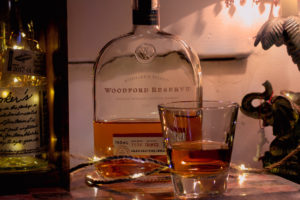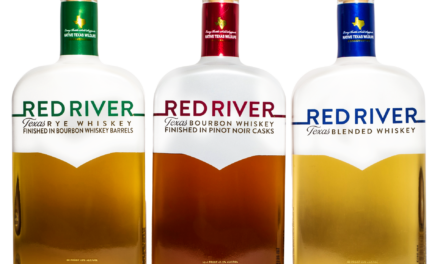The world is brimming with things consumers take for granted—right up until the moment that thing fails. Like home internet service, working traffic lights, or a functioning electoral system. And also, corks and caps on liquor bottles.
I’d wager every consumer has had the experience (at least once) of reaching for a bottle on the shelf and, moments later, finding themselves with a stub of a closure—a wood, metal or plastic disk that’s come free of the synthetic or natural cork it was attached to.
Worse yet are older bottles, on which the deteriorating natural cork breaks midway down the neck, leaving the thirsty to peer at an unattractive divot that will require skilled extraction techniques or, at the very least, a screwdriver, some force, and a strainer to catch the bits. The disappointment is fleeting but profound, like reaching to open a door and having the doorknob come off in your hand.
I’ve had my share of such sad moments. One bottle of pricey whiskey came with a shot-sized aluminum cup over the cork. Having a built-in shot glass was clever and fun and I was eager to sip—except that I couldn’t. The cap had somehow bonded to the neck, and refused even the application of pliers and vice grips. Parched and cranky, I eventually resorted to a hacksaw.
Another time, I got a set of bitters from a European producer, bottled in small, faceted decanters. Very elegant, but also very haunted. The corks in each would slowly work their way out over the course of several days, and I would hear the tops clattering among bottles in the cabinet, like bitter poltergeists, no matter how tightly I resealed them.
For the past couple of months, I’ve been asking distillers about challenges they’ve had with closures. (Unlike the wine world, screw tops still seem to telegraph “bottom shelf” in the spirits realm, although change is in the offing.) The issues with closures seem to be mostly logistical—like surprisingly long lead times for ordering. Or user error. One craft distiller fielded a complaint from a customer who’d left a bottle of whiskey in his car in the summer, in Arizona, and came back to find that the cork had self-ejected and left his vehicle smelling like a rick house. The producer added a shrink sleeve neckband as extra protection.
I’m fascinated by failures, but equally enamored of the over-the-top closures designed to convey “premiumness.” Blanton’s may be the best known: In 1999, it introduced a series of horse and jockey stoppers, each one in a different stride, inducing customers to try to collect all eight. (You can also buy a set of the stoppers alone $45 through its website). Whistlepig’s annual Boss Hog series features a custom-made pewter topper reflecting a different theme each year. For 2020, it celebrated the explorer Magellan, sort of, with a hog-as-matador topper.
In the upscale closure wars, few can top  , which rolled out its Baccarat edition bourbon in the U.S. market in 2020; a $2,000 bottle of whiskey in a handcrafted bottle packaged with a separate all-glass stopper. A representative of the company mentioned to me in passing that the closure alone cost $100 to produce. (A company spokesperson later couldn’t confirm that.)
, which rolled out its Baccarat edition bourbon in the U.S. market in 2020; a $2,000 bottle of whiskey in a handcrafted bottle packaged with a separate all-glass stopper. A representative of the company mentioned to me in passing that the closure alone cost $100 to produce. (A company spokesperson later couldn’t confirm that.)
A study in the 2017 book Gastrophysics by Charles Spence indicated that diners served the same meal rated it significantly higher if they used heavier, more solid tableware rather than cheaper flatware. So one wonders: Is a $100 closure with the heft of luxury an essential element in making a consumer feel a $2,000 bourbon was worth the price?
That’s doubtful. But paying extra attention to what keeps your juice in the bottle may offer unexpected dividends for consumers who pay attention. Especially if it doesn’t break off in their hand at a moment of peak thirst.










